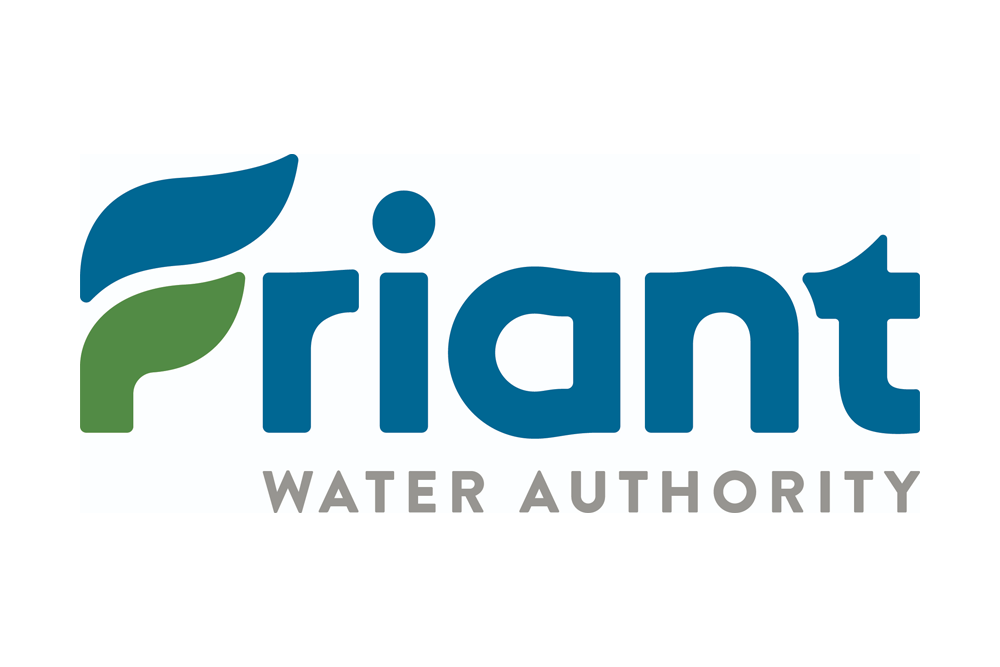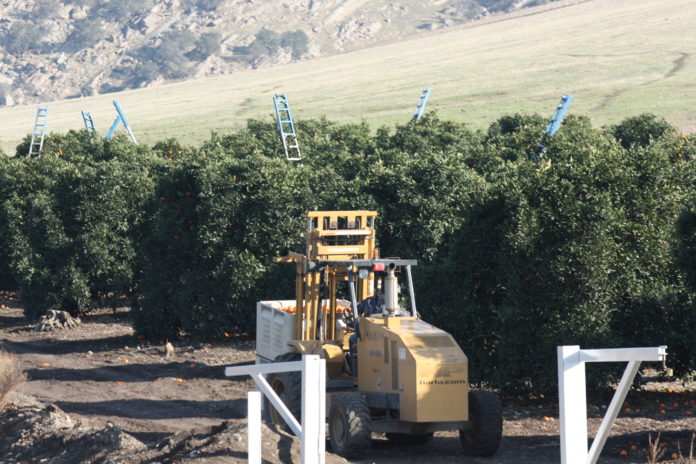 The Kaweah Delta Water Conservation District held its Tuesday, June 1, 2021 board meeting and it was started on time at 9:00am by Chairman Don Mills. During public comment it was said retaining the option of keeping the remote meetings as well as in person meetings as the state opens up from the Sino Virus would be a good thing. General Manager Mark Larsen said Farmersville Boulevard will be repurposed as a four lane and it will only take a year to complete. He said you might have to get out and lock in the hubs to get to the offices.
The Kaweah Delta Water Conservation District held its Tuesday, June 1, 2021 board meeting and it was started on time at 9:00am by Chairman Don Mills. During public comment it was said retaining the option of keeping the remote meetings as well as in person meetings as the state opens up from the Sino Virus would be a good thing. General Manager Mark Larsen said Farmersville Boulevard will be repurposed as a four lane and it will only take a year to complete. He said you might have to get out and lock in the hubs to get to the offices.
The Meeting
The consent calendar was approved. Director Brian Watte was changing from telephone to GoToMeeting and Larsen said he was transitioning from one to the other and Watte asked him not to start any rumors.
The Longs Canal Company, a small private ditch company informed the board it needed its KDWCD to reaffirm its representatives. It takes about 15-minutes of meeting time, four times a year so there was no pushback on just sending the same directors back again. I couldn’t hear who those directors are.
Budgets
Larsen then went over the proposed budget for the upcoming year. Engineer Dennis Keller led the board through an explanation of a rather long list of projects and how they intertwine between the District and surrounding entities. And of course the costs and benefits the projects and proposed projects can or would entail or engender. One such proposed project is to convert marginal wells into monitoring wells, which under the right circumstances would be much cheaper than drilling a new one.
Larsen presented the board with a chart showing how much has been spent to date, what is currently being spent and future estimated expenditures on the Hannah Montana Ranch Project. That’s a $23.7 million project when all’s said and done. But it will yield a great amount of recharge and presumably more than pay for itself in time. Keller said there are funds from the US Bureau of Reclamation Regional Director’s fund that KDWCD is in line for but those funds have yet to be released. There was a Friant employee looking into this who went to work for Stantec Engineering (same firm working on the Friant Kern Canal repairs) who then went to work for the City of Boise Idaho. Keller is trying to get in touch with whoever is supposed to be keeping an eye on this. There is the tension between repairing the FKC and building newer facilities.
funds from the US Bureau of Reclamation Regional Director’s fund that KDWCD is in line for but those funds have yet to be released. There was a Friant employee looking into this who went to work for Stantec Engineering (same firm working on the Friant Kern Canal repairs) who then went to work for the City of Boise Idaho. Keller is trying to get in touch with whoever is supposed to be keeping an eye on this. There is the tension between repairing the FKC and building newer facilities.
There were other budget items discussed. One such expense is the Kern River cloud seeding cost shares. The Kaweah River and the Kern River can be clouded seeded at the same time more efficiently and therefore cheaper than seeding each watershed separately. There is some concern the Kern River folks may not want to continue sharing the costs and back out.
Water Supply
The water report was next and for some reason Larsen gave the report instead of Vic Hernandez. There was a great amount of paper shuffling after the lengthy budget report and someone was shuffling right up against the microphone. Oh well, if that is the worst thing to happen today it’ll be alright. Larsen said it’s a sad year. Maybe 18 percent of the normal supplies may be available. There is a great deal of exploration between units in the watershed on how to work with others through trades and transfers. There is a meeting next week were runs should be determined. This is the first time in 114-years some of the pre-1914 rights holders will not receive water from the Kaweah River. Keller said there is no Central Valley Project ag supplies south of Delta and M&I is only getting 25 percent. There is talk about having to put pumps in Folsom Reservoir and pumping water out of the dead storage to contribute to Delta water quality. The Friant division of CVP could get 16 or 17 percent. A call by the Exchange Contractors hasn’t been decided yet. Director Chris Tantau said Friant’s staff and Ex Con have been working together better this year and there is more goodwill. Keller said Ex Con’s consultant Dan Steiner is from the Kaweah area. Keller said this is shaping up to be the worst year on the Kaweah River so far as recorded history is concerned. Mills said everyone is in scramble mode. Someone said they were glad they drilled new wells back in 2014.
M&I is only getting 25 percent. There is talk about having to put pumps in Folsom Reservoir and pumping water out of the dead storage to contribute to Delta water quality. The Friant division of CVP could get 16 or 17 percent. A call by the Exchange Contractors hasn’t been decided yet. Director Chris Tantau said Friant’s staff and Ex Con have been working together better this year and there is more goodwill. Keller said Ex Con’s consultant Dan Steiner is from the Kaweah area. Keller said this is shaping up to be the worst year on the Kaweah River so far as recorded history is concerned. Mills said everyone is in scramble mode. Someone said they were glad they drilled new wells back in 2014. Storage Deals
Storage Deals
The board was asked to approve two storage agreements at Kaweah Lake: the E.H. Black agreement between Je Te Velde Jr. and Darlene Te Velde Trust and the KDWCD/St. Johns Rivers Associations and the Harrel Ranch agreement between Visalia Ranch East and KDWCD/St. JRA. KDWCD Engineer Larry Dotson said before Terminus Dam on Lake Kaweah provided more storage there were other agreements. It’s time to revisit these deals to everyone’s benefit. The folks with the storage rights in these deals have very poor standing in the hierarchy of who gets to keep water in storage the longest. They are the first to lose storage and have a hard time moving their water downstream so they can receive it if it is released. These agreements would allow the junior storage right holders to transfer their storage to more senior rights holders. The board agreed.
Kaweah provided more storage there were other agreements. It’s time to revisit these deals to everyone’s benefit. The folks with the storage rights in these deals have very poor standing in the hierarchy of who gets to keep water in storage the longest. They are the first to lose storage and have a hard time moving their water downstream so they can receive it if it is released. These agreements would allow the junior storage right holders to transfer their storage to more senior rights holders. The board agreed.
CVP & Friant & Diversion Monitoring
There were no CVP or Friant reports but Dotson said the diversion monitoring program is going very well and is up and operating. However, there isn’t much water to monitor. Dotson recited an impressive list of improved functions on the new system. This is the Hotspot Ag system made in Hanford.
ASO
Larsen gave the board an update on the Airborne Snow Observatory flights. The last flight was May 9th and it showed only 10,000 a/f of possible snow water runoff at the crest of the Kaweah watershed. The ASO is proving to be a great asset.
Larsen and Keller showed the board photos where the Friant Kern Canal tie-in meets the Hannah Ranch. There were some problems with water leaking past the coffer dam but that situation was corrected. The concrete forms are built and the first part of the 72” stainless steel pipe has made the trip from Texas to Bakersfield where it will be coated. Keller noted when the project started plywood was less than $30 per sheet and is now over $100 per sheet. Despite the huge increase of costs Keller declared as long as water runs downhill this facility will work. He said the cost of lumber is one thing but with the focus of High Speed Rail moving out of the Valley the cost of concrete is running high. Cement trucks are moving out of the Valley like rental cars did during the Chino Virus.
GKGSA
The Greater Kaweah Groundwater Sustainability Agency report was next. Larsen reported and again I don’t know what happened to GSA Executive Officer Eric Osterling. Larsen said the GKGSA 218 Election was successful if you wanted it to win, and it sounded like it won big. Larsen credited Osterling’s hard work to bring this victory to fruition. He said this being such a dry year the pressure on the GSAs is great. Mills said the ramp down will most likely have to be more aggressive than it would have been had there been some normal years in the first quarter of the program. He said many of the GSAs in the south San Joaquin Valley may have to reevaluate their pumping plans in light of how quickly undesired consequences can pop up in such a dry year.
Next Meeting
The next meeting will be July 6th and the meeting went into closed session for two potential cases of litigation, an employee evaluation and a labor negotiation. That was that as of 10:56am.
as of 10:56am.
DISCLAIMER OF RESPONSIBILITY; Waterwrights.net strives to provide readers and clients with the most complete, up-to-date, and accurate information available. Nevertheless, Waterwrights.net does not serve as a guarantor of the accuracy or completeness of the information provided, and specifically disclaims any and all responsibility for information that is not accurate, up-to-date, or complete. Waterwrights.net’s clients therefore rely on the accuracy, completeness and timeliness of information from Waterwrights.net entirely at their own risk. The opinions expressed in this report are those of the author and do not represent any advertisers or third parties.
ALL RIGHTS RESERVED. Copyright 2021 by www.WaterWrights.net/DAW
Kaweah Delta Water Conservation District
2975 N. Farmersville Blvd.
Farmersville, California 93223
559/747-5601 KDWCD is part or the Greater Kaweah GSA DWR #5-022.11
Board of Directors
Don Mills – President, Chris Tantau – Vice-President, Ron Clark, Jimi Valov, Jeff Ritchie, Mike Chrisman & Brian Watte
Management
Mark Larsen, General Manager – mlarsen@kdwcd.com
Terry Stafford, Facilities Manager – tstafford@kdwcd.com
Debbie Vierra, Administrative/HR Coordinator – dvierra@kdwcd.com
Larry Dotson, Senior Engineer – ldotson@kdwcd.com
Shane Smith, Projects/Administrative Manager – ssmith@kdwcd.com
Office and Field Staff
Equipment Operators – Jesus Sandoval, Chris Bell
Water Master – Victor Hernandez
Office Assistant – Kathleen Halvorsen
Primary Consultants
Bruce George – Special Projects Consultant
Dennis Keller – Civil Engineer (Keller/Wegley Consulting Engineers)
Aubrey Mauritson – Attorney (Ruddell, Cochran, Stanton, Smith & Bixler, LLP)
From the Kaweah Delta website:
The Kaweah Delta Water Conservation District (KDWCD) was formed in 1927, under the provisions of California state law known as the Water Conservation Act of 1927, for the purpose of conserving and storing waters of the Kaweah River and for conserving and protecting the underground waters of the Kaweah Delta. Later the Water Conservation Act, as well as the purpose of the District, was expanded to include power generation and distribution.
The District is located in the south-central portion of the San Joaquin Valley and lies in portions of both Tulare and Kings Counties. The total area of the District is about 340,000 acres with approximately 255,000 acres located in the western portion of Tulare County and the balance, or 85,000 acres, in the northeastern portion of the Kings County.
The Districts lands are primarily agricultural in nature, although the cities of Visalia and Tulare constitute significant areas of urbanization. Farmersville is the other incorporated area. The population of the District is currently estimated to be in excess of 175,000 people with the principle crops being cotton, misc. field crops, deciduous fruit and nut trees as well as alfalfa.
Numerous public and private entities within the District’s boundaries divert water from the Kaweah River and its distributaries. Nearly all of the lands served with Kaweah River water also are served irrigation water from groundwater, primarily due to the erratic and relatively undependable nature of flow on the Kaweah River. All municipal and industrial water uses within the District are supplied from groundwater.
KDWCD and Tulare Irrigation District (TID), which lies entirely within the boundaries of the Kaweah Delta Water Conservation District, has a long-term contract with the federal Central Valley Project (CVP) for water from the Friant Division of the CVP. TID has historically received substantial quantities of CVP water surplus to the demands of the District which augment the Kaweah River supply.
The District and the Kaweah River groundwater basin have experienced long-term groundwater overdraft estimated in 2007 to be as much as 40,000 acre-feet per year. The District has performed multiple studies of groundwater data to determine the extent and volume of groundwater overdraft within its boundaries. There are currently over 40 recharge basins within the District covering approximately 5,000 acres. While KDWCD owns and operates many of these groundwater recharge basins, it does not provide water banking services for others.


































